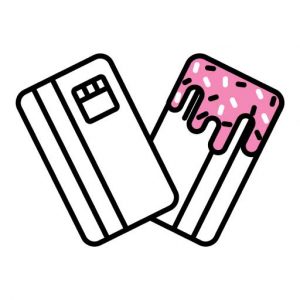AOV is the average sum of money that a customer spends in a single store in a given period of time.
APF is the number of times an average customer buys goods or services from a specific seller in a given period of time.
These are the two most important components of digital store performance, which should be addressed in order to improve revenue.
Ways to improve AOV performance
- Focus on marketing for the passionate segment –
These are people with a defined passion for the category. For example, some people crave fashion on a daily basis. If you run a digital fashion store, you should trace that segment and dedicate most of your marketing energy and resources there. This segment consists of people who are more attuned to messages and content in the category they are passionate about. They will read your content and share it with their friends. They will try new products and talk about them and once they reach your store, they will probably spend more money. The average expenditure per purchase on fashion in digital stores is around $97. The average expenditure of Passionates was almost $126 – 29% higher.
Think about what it might do to your bottom line.
How to find my Passionates? Facebook allows you to target them through their interests and affiliation to the relevant groups. Google allows the use of the search terms they use. You can also take advantage of every visit to your store to invite them to join your community of valued shoppers. They usually accept invitations to sales.
- Getting to know your target audience, their needs, financial abilities, desires, shopping and spending track record in your store. Knowing your customers’ behavior will help you improve your AOV performance.
- Personal promotions based on a thorough understanding of your customers, while promoting tailor-made offers of complementary or similar products to the products and offers which attracted your consumer to your store in the first place.
- A personalized store design. One of the significant advantages of digital stores compared to physical ones is the ability to display a specially designed store for every consumer – a store that looks different, displays specific shelves, and focuses on specific products or sales.
Each customer gets a different configuration of the stock based on their personal preferences, needs, and purchase history.
Ways to improve APF performance
- Group purcahsing – a digital store inviting its members to a “50 / 50” campaign – a 50% discount is guaranteed to members if they come to the store as a group of 50 shoppers within a defined period of time. A group purchase guarantees the brand or store its members will work hard to share that promotion in order to guarantee 50 people to come and buy the product. Most of the people who join have never planned to go shopping but were drawn into it as a result of the sale.
- Content – When you bring value to your customers even when they are not buying, there is a good chance you will lure them to unplanned shopping. Good content improves contact frequency between the store and its customers. Contact density is an important factor that leads to a selling dialog.
- Business Oriented Triggers. These solutions can move people from a place devoid of a sales dialog (the store’s Facebook page) to a venue with selling potential (the digital store). Such persuasion solutions can consist of coupons, point accumulation plan, etc.
- Family or couples’ packages. If relevant, this is certainly a move that could improve shopping frequency.
- Loyalty Programs. An excellent vehicle that could support shopping volume targets and improve purchasing frequency. Loyalty programs offer real value to customers, motivate them to become returning customers and of course prevent customers from moving to your competitors.
- Customer retention campaign. Email, social, mobile – all are good, as long as you create unique value, and a personal and flattering offer.
What should you measure?
Repeat Purchase Rate = The number of buyers who have bought more than once in the past year – divided by the total number of customers in the past year.
Purchase Frequency = the number of orders in the past year – divided by the number of (different) buyers in the past year.
Comtov Audio :
